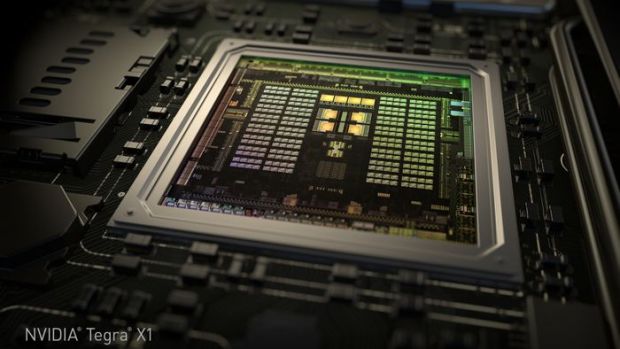NVIDIA may no longer have plans to push the Maxwell further than the 28nm fabrication technology on the PC front, but that doesn't mean that other incarnations of the technology are going to stay that way. Quite the opposite, considering the capabilities of the new Tegra X1 mobile chip.
Strangely enough, the Tegra K1 system-on-chip device, featuring ARM processing cores and Kepler-based graphics, didn't do as well as previous Tegra chips.
Mostly because Qualcomm's Snapdragon and Samsung's Exynos series of SoCs also did pretty well. The overpowered graphics in Tegra worked against NVIDIA this time, as they added cost without being something that phones are likely to use or need.
The Tegra X1 chip that NVIDIA just released is designed on the 20nm process technology and still offers a substantial increase in performance, on all levels, but NVIDIA also has a different tactic this time.
The Tegra X1 is not just a mobile chip
NVIDIA still fully expects the newcomer to be used in tablets and smartphones, but it's not putting all or even most of its hopes in that sector.
Instead, it has an entire business program centered around the automotive industry. Or, in layman's terms, cars.
They've even announced a connected car platform called Drive PX, but we'll be looking at that one separately. For now, the Tegra X1 itself demands attention.
The Tegra X1 specifications
The processing platform uses eight CPU cores. Four of them are ARM Cortex A57 ones, and the other four are ARM Cortex A53.
The former set will do the heavy lifting, while the latter will take over in case workload is light enough to allow for prioritizing energy savings.
The GPU, meanwhile, features 256 Maxwell CUDA cores. It's not clear how it compares to PC graphics, but since Tegra K1 had a GPU comparable to game consoles, you can be sure that this one is even better. All in all, the Tegra X1 should be twice as powerful as the K1. Support for 60 fps 4K video is guaranteed for example, as is 1.3 gigapixel of camera throughput.
Practical applications
We'll be seeing new tablets at CES 2015 and beyond of course, but NVIDIA also intends for the chip to be used in autonomous, self-driving cars and the like. We'll look further into this topic shortly, since the Drive PX warrants a full examination.
In the meantime, ponder on the fact that NVIDIA's Tegra X1 is, on its own, faster than the best supercomputer of 15 years ago, while supporting the following technologies on top of that: Voxel Global Illumination (VXGI, for real-time dynamic global illumination), Multi-Frame Anti-Aliasing, Unreal Engine 4, DirectX 12, OpenGL 4.5, CUDA, OpenGL ES 3.1, and the Android Extension Pack.

 14 DAY TRIAL //
14 DAY TRIAL // 

